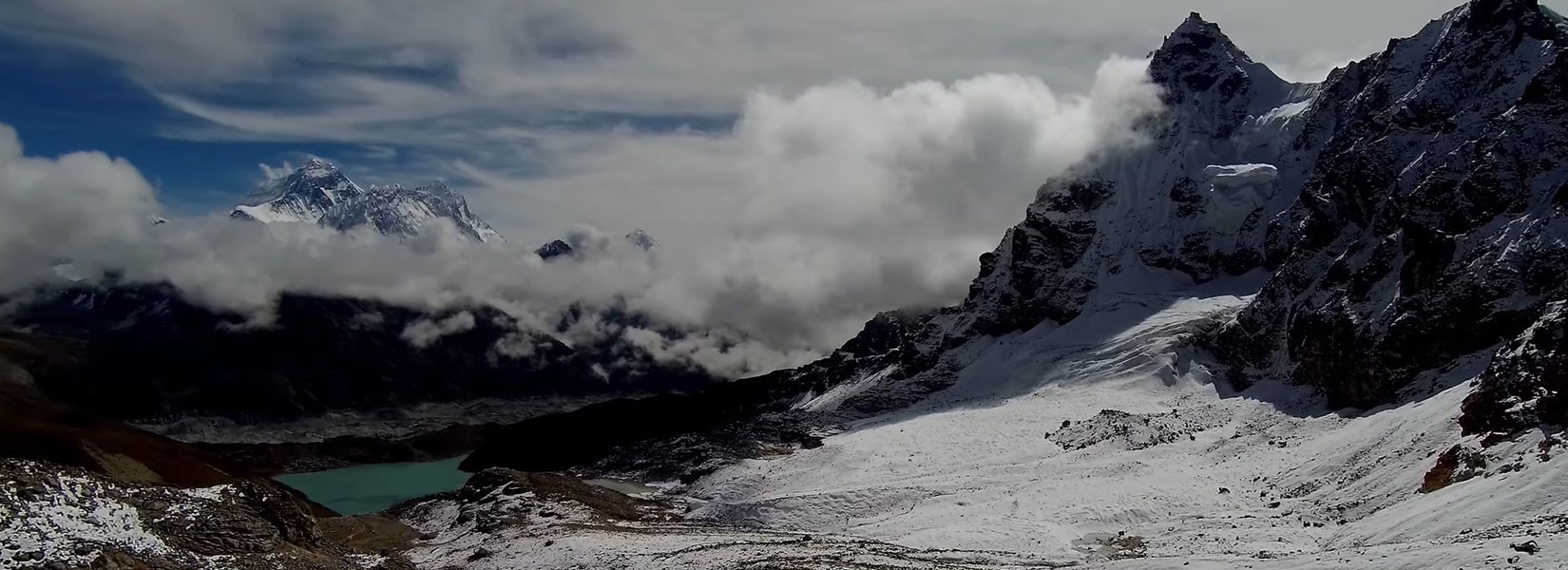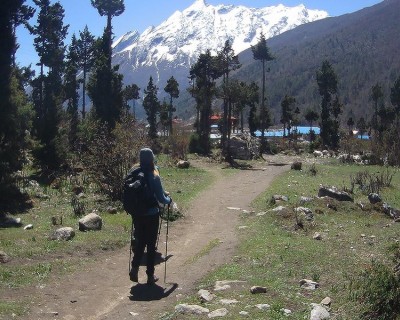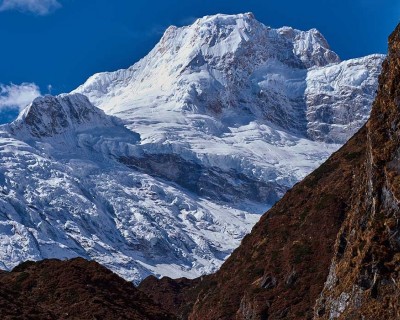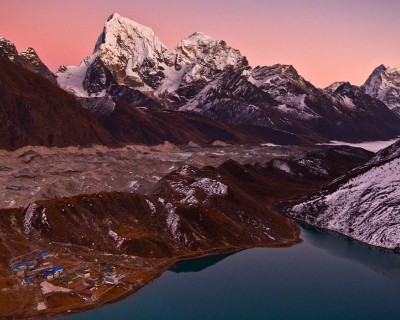The Gokyo Lake trek is an amazing alternative experience that explores the beauty of the isolated section of the Gokyo Valley of the Everest region. Although the Gokyo Lake trek has been graded at a moderate-difficult level, there are several factors that need to be considered to truly determine this trek’s difficulty.
How Hard is the Gokyo Lake Trek?
Table of Contents
In general, the three alternative expenditures to Gokyo Lake, i.e., Everest Base Camp Chola Pass Gokyo Trek, Gokyo Renjo La Pass Trek, and Gokyo Valley Trek, have their own difficulty level and perks. The trekking to EBC via Cho La Pass, the longest of the three variants, is considered to be the most difficult and challenging. And passing through Renjo La Pass is considered slightly easier than Cho La Pass.
Contrary to those, the Gokyo Valley Trek is the shortest and considerably much easier as it doesn’t have many technical and difficult segments.
Nonetheless, adventure at such an altitude isn’t an easy feat, but it certainly is rewarding. The Gokyo Lake trek in the valley, with great significance in both Buddhism and Hinduism, is a soulful journey on the laps of the majestic and gratifying Himalayas.
Traversing through diverse landscapes, alluring massifs (including Mt. Everest, Mt. Makalu, Mt. Cho Oyu, Lhotse, and many more), rich cultural and traditional civilizations, and some of the most religious monuments, the Gokyo Lake trek is undoubtedly a grand way to explore the Everest region.
So, if you are looking for an adventure in these magnificent trails, before predominantly labeling it as an easy or difficult trek, let's explore factors that determine the difficulty level of this trek.
Duration
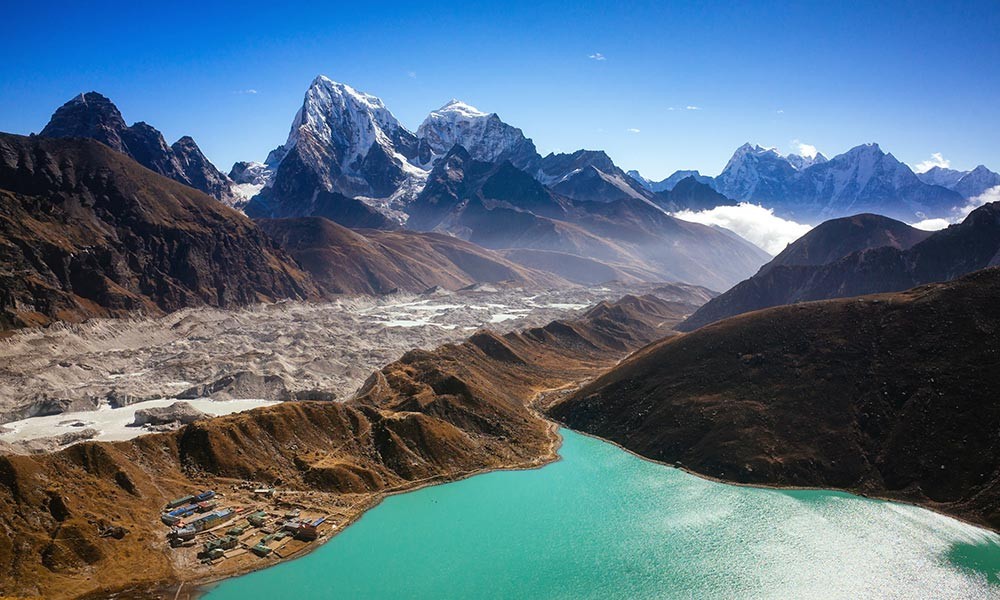 The duration of any trek determines the true difficulty of a trekking route, even for experienced trekkers. This 10-day trek covers approx distance of 92 km, and you will have to cover around 9 to 10 km distance per day. So, you will be walking around for an average of 5 to 6 hours in a day.
The duration of any trek determines the true difficulty of a trekking route, even for experienced trekkers. This 10-day trek covers approx distance of 92 km, and you will have to cover around 9 to 10 km distance per day. So, you will be walking around for an average of 5 to 6 hours in a day.
If you are used to walking and workout, it won’t be much of a deal, but it isn’t the same for beginners. With the rise in elevation, the walking difficulty also gradually increases as the oxygen level keeps declining at the higher altitude. Generally, the trekking packages in Nepal have enough acclimatization days to deal with the elevation jumps and get used to the high-altitude environment.
However, if you were to rush the Gokyo Lake trek with shorter variants that includes less number of trekking days than recommended to properly acclimatize to the environment, it certainly won’t be a fun or easy experience.
Steepness
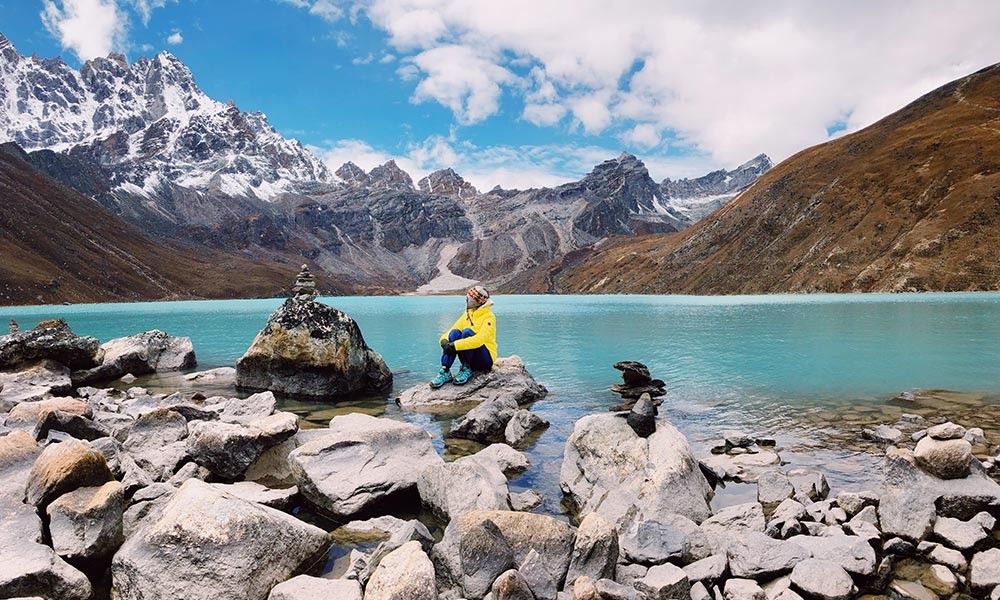 Gokyo Valley trek is known for its steep segments, the Steepness of Gokyo Valley demands more physical exertion than a gradual climbing segment. In fact, the steepness of the adventure in this uncharted Himalayan region is so challenging that if the difficulty level was entirely based on steepness, this trek would receive 4.5 out of 5 difficulty levels.
Gokyo Valley trek is known for its steep segments, the Steepness of Gokyo Valley demands more physical exertion than a gradual climbing segment. In fact, the steepness of the adventure in this uncharted Himalayan region is so challenging that if the difficulty level was entirely based on steepness, this trek would receive 4.5 out of 5 difficulty levels.
Thus, with an average trekking duration of 5-6 hours, exploring and climbing through the steep section, both uphill and downhill, without a doubt, puts an immense physical strain than a gradual plain path. So, if you are considering the conquest of the virgin territories of Everest without proper preparation to tackle the steep part of the region, it won’t be an easy win.
Elevation
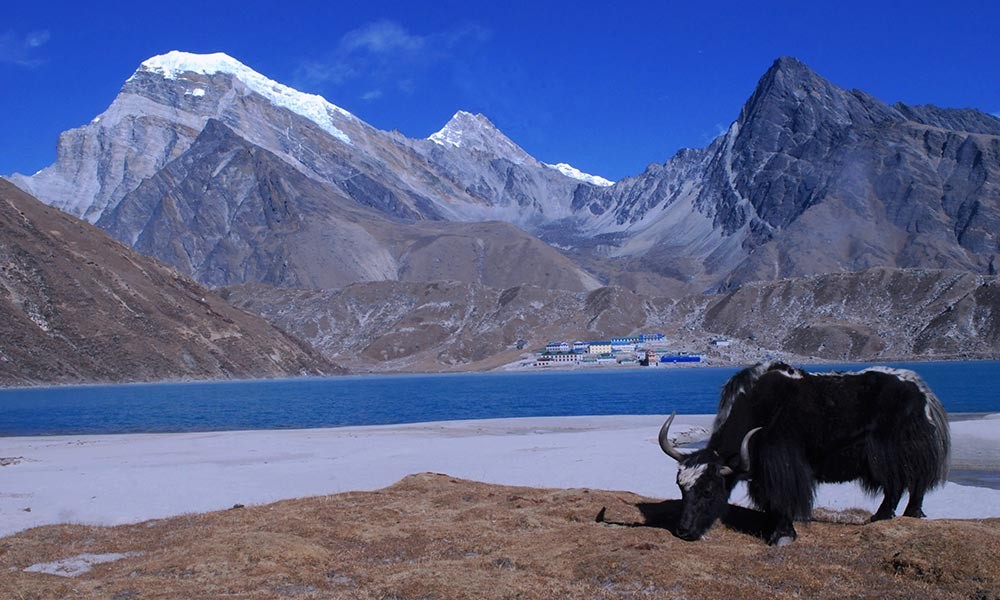 The elevation is another major factor that determines the Gokyo Lake trek difficulty. This beautiful trek takes place in the region of the tallest mountain in the world, Mt. Everest, at an altitude of 8,849 meters from sea level. So, naturally, the Gokyo Lake trek is an adventure at a significant elevation, its altitude ranges from 4,700 meters to 5,000 meters throughout the experience. And, if your trekking package is to take your adventure even further to the Everest Base Camp (5,364 meters) and Kalapatthar (5,644 meters), that would certainly add a few more challenges.
The elevation is another major factor that determines the Gokyo Lake trek difficulty. This beautiful trek takes place in the region of the tallest mountain in the world, Mt. Everest, at an altitude of 8,849 meters from sea level. So, naturally, the Gokyo Lake trek is an adventure at a significant elevation, its altitude ranges from 4,700 meters to 5,000 meters throughout the experience. And, if your trekking package is to take your adventure even further to the Everest Base Camp (5,364 meters) and Kalapatthar (5,644 meters), that would certainly add a few more challenges.
With the word ‘attitude’ comes its tagline, ‘altitude sickness’; with the spike in the elevation of the route, the risk of altitude sickness also relatively increases. There can be several factors that cause altitude sickness; however, with proper acclimatization process and staying hydrated throughout the trek can be a big help in preventing altitude sickness.
Weather and Temperature
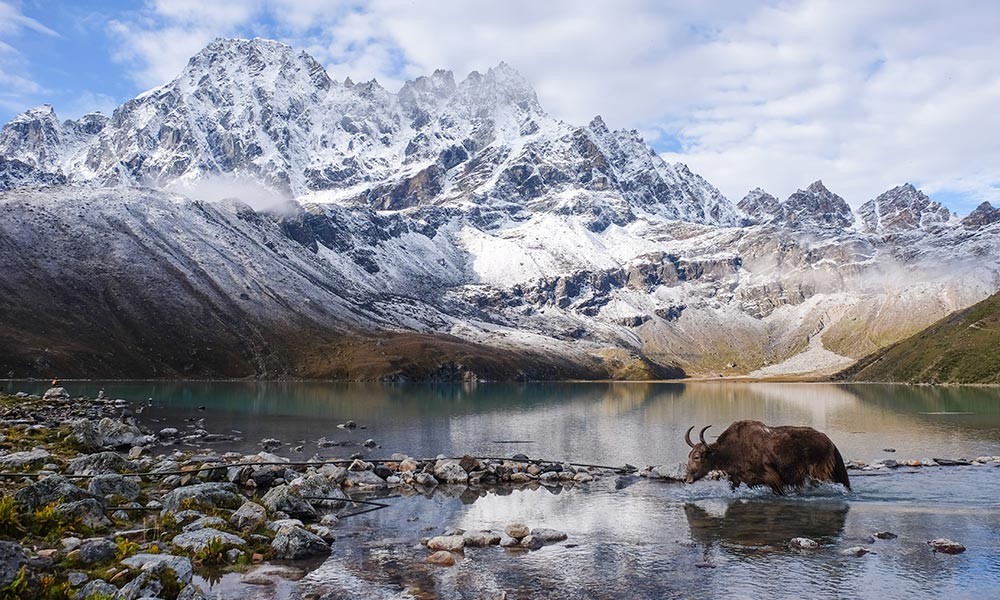 With the commencement of the journey from a lower altitude at Lukla (2,860 meters), the temperature is relatively warmer; however, as you keep ascending to the higher altitudes, the temperature starts to decrease drastically. The winds gradually start freezing and turn icy, and the temperature ranges from 15°C to 12°C during the springtime, and it can drop to -6°C to -10°C during the night, in two peak seasons for trekking in Nepal. And during the winter, the temperature of the region goes as high as 4°C and can drop as low as -18°C.
With the commencement of the journey from a lower altitude at Lukla (2,860 meters), the temperature is relatively warmer; however, as you keep ascending to the higher altitudes, the temperature starts to decrease drastically. The winds gradually start freezing and turn icy, and the temperature ranges from 15°C to 12°C during the springtime, and it can drop to -6°C to -10°C during the night, in two peak seasons for trekking in Nepal. And during the winter, the temperature of the region goes as high as 4°C and can drop as low as -18°C.
Thus, the high-altitude temperature adds different challenges depending upon the season of the visit. The weather in the high-Himalayan region can change significantly without even a warning; during the winter season, the trails are often covered with snow, and the days see high to low snowfalls. Similarly, during the monsoon, heavy rainfall can increase the challenges and risks of the expedition; without the right gear and equipment during the off-season, the adventure in the Himalayan region of the country can be fatal. Peak trekking seasons may not demand advanced trekking gear; however, with the right equipment, the Gokyo Lake trek is still possible during the off-season.
Physical Training and Stamina
The expedition to an altitude above 5,000 meters certainly doesn’t come easy. So inevitably, the high-altitude adventure demands a certain level of stamina and endurance for an immersive experience. As you climb uphill to the foothills of the tallest mountain in the world, the oxygen level starts to thin out, and the terrains are tough. Thus, it is very crucial to build up stamina with the right training methods for the adventure in the Himalayan region. If you have well prepared for the Gokyo Lake trek, the expedition becomes much easier and more enjoyable.
The trekking experts recommend walking. Jogging, sprinting, and going on bicycle rides for the preparation of trekking in high altitude regions. It is recommended that you should start physical training at least 8-12 weeks prior to the expedition; this way, your body will completely adapt to the physical training routine. As the average walking hours is around 5-6 hours per day, it will be ideal if you prepare at least the average hours of trek time during your everyday training.
You could train on natural uphill terrain carrying a backpack or rucksack; this way, it won't be a problem to carry your backpack during the real adventure. If you cover at least 4-7 km/day during your training period, the experience of high-altitude trekking will certainly be delightful. Especially for the steep region like the Gokyo Lake trek, training legs muscle on stairs will be very rewarding.
Difficulty of Gokyo Lake Trek Alternatives
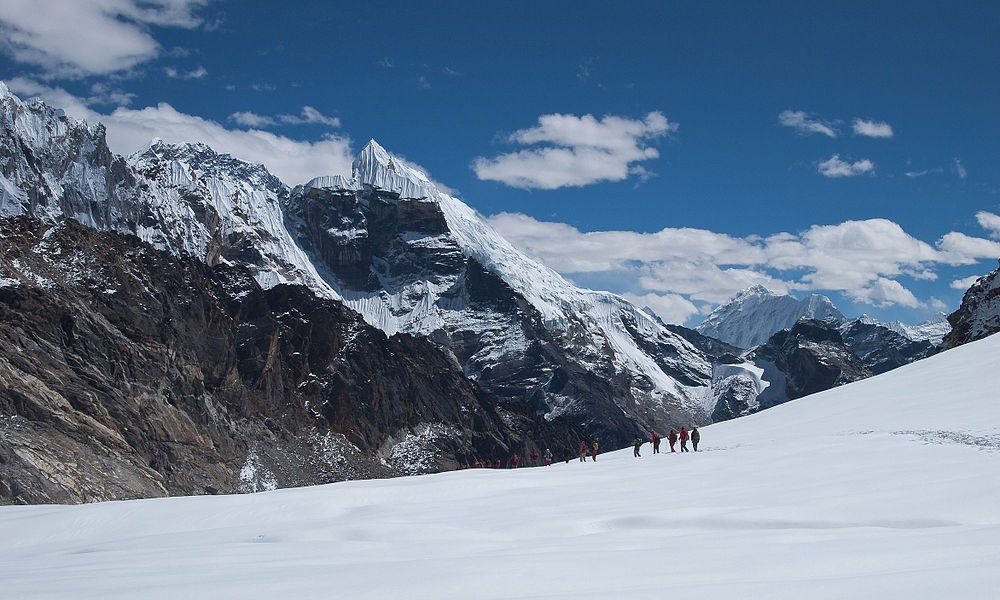
There are generally three routes for the exploration of Gokyo Lake, and each of them has its own time frame and difficulty level.
- Everest Base Camp Chola Pass Gokyo Trek (15 days)
- Gokyo Renjo La Pass Trek (12 days)
- Gokyo Valley Trek (10 days)
The Everest Base Camp Cho La Pass Gokyo trek is the longest variant of the adventure of the Gokyo Valley. Cho La Pass (5,420 meters) is considered one of the technical routes and passes through terminal moraine and large ice sheets. Higher than the peak elevation of Everest Base Camp (5,364 meters), this trekking route is certainly a challenging adventure and probably the most demanding trail out of the three.
Similarly, the Gokyo Lake Trek via Renjo La Pass is an exciting and challenging trekking adventure of the Everest region. The steep regions with several ups and downs that demands good physical endurance and stamina; although Renjo La Pass (5,360 meters) is at a high elevation, it is at the lowest elevationpeople point out of all three passes. The trekking routes of this trail aren’t the steepest; thus, relatively easier expedition compared to other passes of the Everest region.
And finally, the Gokyo Vally Trek, which lasts 10 days, is an amazing immersive short, and easy alternative to relish the magnificence of the high-Himalayan valley. The highest elevation point of this trekking experience is at Gokyo-Ri (5,357 meters), as the trek follows a moderately easier path with fewer technical segments than the other two alternatives. This is one of the best alternatives for exploring the beauty of Gokyo Lake, the valley with the highest civilization in the world.
You may also like:


